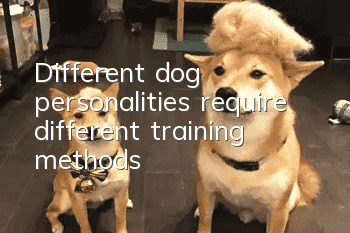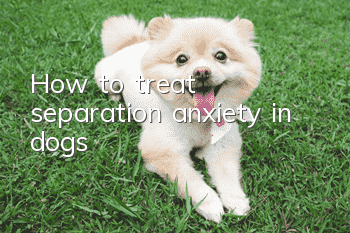Different dog personalities require different training methods

As long as you train this type of dog according to its main reaction characteristics and use corresponding methods to treat it, you can get good training results. If the training method is improper, it is easy for the dog to have a bad relationship.
(2) Quiet type
When training this type of dog, attention should be paid to cultivating its excitement and liveliness. Because this type of dog is slow to respond, it is often necessary to repeat commands more often and use forced methods during training to achieve good results. But avoid issuing different commands quickly and continuously or using stimuli that conflict with excitement and inhibition. If you have just given the "hold" command and asked the dog to pick it up, you cannot stop the dog immediately, otherwise the dog will not be able to react immediately, and even cause high nervous activity in nerve activity. This type of dog develops differentiation inhibition relatively slowly. Therefore, when cultivating the ability of dogs to inhibit differentiation and differentiation, one must not be impatient and rash. In addition, this type of dog can tolerate strong mechanical stimulation, so when training basic subjects, some forced stimulation methods can be appropriately used. In order to cultivate the dog's excitement for work, it is very effective to use the "good" command to reward or give the dog a walk during training. The above three types of neurological treatment methods for dogs are relatively typical. In addition, you will encounter more mixed types of ground dogs. For these dogs, in addition to referring to the local methods of treating the above three types separately, they should be treated separately according to the dog's conditions in combination with the specific conditions of the dog being trained.
(3) Exciting type
Training this type of dog mainly involves gradually cultivating and developing its inhibition process to adapt it to the excitement process. But when cultivating its ability to suppress, be careful not to rush too hastily. For example, when cultivating the ability to delay and inhibit, the delay time must start from the first few seconds and then gradually be extended, and the long and short periods must be combined. Before cultivating the dog's differentiation and inhibition ability, its excitability should be appropriately reduced to facilitate the development of abilities. For example, before training to identify, the dog can be fully roamed or do some basic subjects to balance the neurological process. This type of dog has a strong food response, so in the initial stage of ability development, training with food induction is very effective in accelerating the formation and consolidation of conditioned reflexes. In addition, this type of dog can tolerate strong mechanical stimulation. Strong mechanical stimulation can be used when training basic subjects or correcting certain bad behaviors.
- What are the training techniques for Silver Fox dogs?
- How fat does a dog have to be? How to tell if a dog is obese?
- What medicine should be taken for dogs with neurological canine distemper convulsions?
- How to get rid of tear stains in dogs? Reasons why dogs shed tears
- My dog has become “aunty”, what should I do?
- Dog urethritis symptoms
- How to give first aid to a drowning dog
- Are Dalmatians easy to raise? What are its living habits?
- Corgi vaccination time
- What to do if your Samoyed gets food poisoning



